Text

On this day in History, 10 June 1432, Jeanne d'Évreux, daughter of Navarre, died at Havering-atte-Bower. She was formerly Duchess of Brittany by her first marriage, and Queen of Enfland by her second marriage, which was a love union. Despite being imprisoned for some years by her stepson, Henry V, Joan (as she was better known by her English subjects) still received visits from her stepchildren such as Humphrey of Gloucester and John of Bedford, but more often her Beaufort in-laws like Cardinal Beaufort. She was buried next to Henry.
12 notes
·
View notes
Photo

“Margaret must have been devastated when she heard of Henry’s condition but there was little that she could do and it must have been with a heavy heart that she entered her confinement in London in September.”
- She Wolves: The Notorious Queens of Medieval England by Elizabeth Norton.
Margaret of Anjou prays before she retires to her confinment. She is quite anxious and worried about her husband’s health and the future of the kingdom of England, so I imagined her becoming very vulnerable. It’s an intimate moment, she entrusts both her worries and her tears to God, only out of love for her beloved Henry.
215 notes
·
View notes
Text

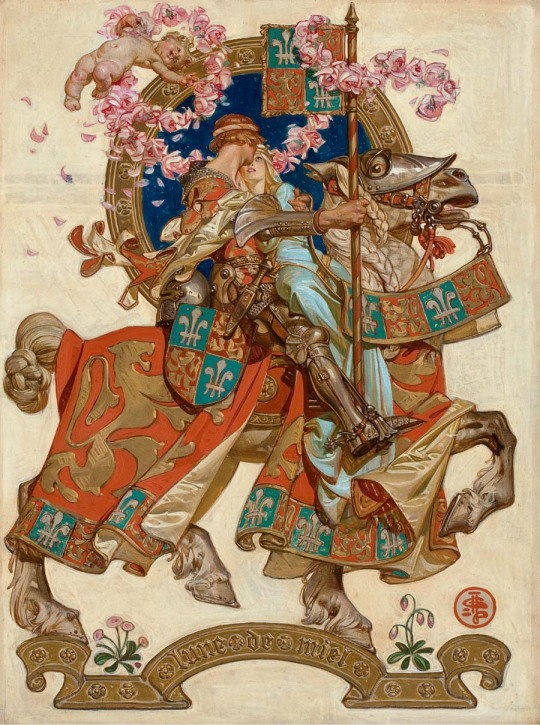
"Henry V and his French Bride"; "Honeymoon", by J.C. Leyendecker
2K notes
·
View notes
Text

23 March 1430: Marguerite d'Anjou is born at Lorraine, France. She later became Queen of England by marrying King Henry VI.
#house of lancaster#happy birthday to margaret of anjou#marguerite d'anjou#margaret of anjou#queen of england#house of anjou#plantagenet dynasty
2 notes
·
View notes
Text
DEATH OF AN ANOINTED KING:
THE ASSASSINATION OF HENRY VI OF ENGLAND.

“The Croyland Chronicle condemned the 'tyrant' who 'dared to lay sacrilegious hands on the Lord's Anointed' and by June word had reached France that Edward had 'caused King Henry to be secretly assassinated in the Tower... He has, in short, chosen to crush the seed.’
The Warkworth Chronicle, written no later than 1484, noted suggestively that when Henry died he was kept company in the Tower by 'the duke of Gloucester', Edward's youngest brother and the man who had only a few weeks before condemned most of Henry's surviving commanders to execution in Tewksbury. But Gloucester was certainly not alone in the Tower.
At one point during Fauconberg's rebellion, the lieutenant of the Tower, the septuagenarian Lord Dudley, was commanding a hundred soldiers there and thirty-six men are named as being in attendance on Henry during his last imprisonment. Any one of these men might have been Henry's murderer.
Even the exact cause of Henry's death was unclear. A legend soon arose that Henry had been stabbed. However, when his body was exhumed in 1910, the skull was found to be 'apparently matted with blood' and broken in several places. He may therefore have died from a blow to the head.
What is certain is that in spite of the legends that later wove themselves around Richard, duke of Gloucester, connecting his hand with Henry's death, the ultimate responsibility for it lay with Edward IV.
As constable of England, Gloucester was responsible for imparting royal justice and may have carried a royal command for Henry's death. But that order had to come from Edward.
Whatever befell Henry the night before, on the morning of 22 May 1471 his body was embalmed with wax and spices, then wrapped in linen for burial.
But before he could be laid to rest there was one last forced procession he had to make. To prove, once and for all, that the House of Lancaster was defeated, Henry's corpse was loaded on to a wagon to wind its way through London's streets to St Paul's Cathedral, surrounded by torchbearers and soldiers.
For a few days he was left on display in the cathedral, his unseeing face open to public scrutiny. As his body lay on the pavement of the church it was seen to bleed, a sign that was generally understood to indicate that Henry had been murdered.”
JOHNSON, Lauren. “Shadow King: Life and Death of Henry VI”
#house of Lancaster#plantagenet dynasty#Henry VI of England#Henry VI#Edward IV#Richard III#kingslaying#war of the roses#cousins’s war
6 notes
·
View notes
Text
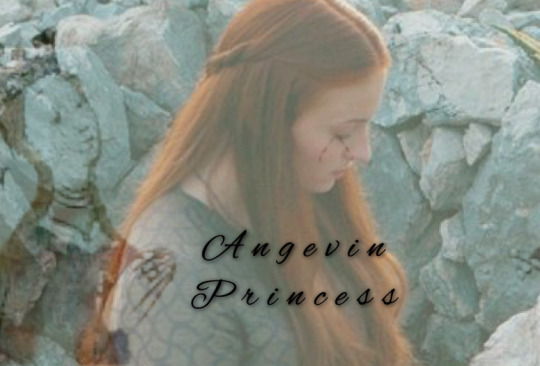

Concerning Margaret’s transition from Angevin princess to Queen of England, historian Lauren Johnson gives some light about it as we see below:
“While Henry prepared for his queen's arrival with costly restoration and building work on the royal palaces, Margaret remained with her family in Lorraine. In the end, she did not leave them until March 1445, eventually making the journey from Nancy through Armagnac controlled France with a considerable escort of musicians, courtiers and servants.
Margaret's brother, Jean of Calabria, accompanied her with a French escort as far as St Denis, then the duke of Orléans took his place as representative of the French princes.
At Pontoise, on the ancient road from Paris to Rouen, her French escort left her altogether and she was delivered into the care of the English.
Henry had spent more than £5,000 providing his queen with a suitably impressive, 300 strong, for her journey, but the strain of endless travel and the transformation in her situation started to take its toll on Margaret.
She had only just turned fifteen and had still never met the man for whom she was leaving her family and friends to begin a new life in England. Her physician's bills mounted, Dr Francis mixing up 'diverse spices, confections and powders' to make her medicine while a yeoman toiled in the kitchen to try to restore her to health with nourishing dishes. It did not help.
Margaret was so ill by the time she reached Rouen that the sumptuous chariot draped in cloth of gold that Henry had sent for her formal entry into the city had to be occupied by a proxy.
Suffolk's wife, Alice Chaucer, played the part of 'queen' while the sickly Margaret languished in Rouen Castle.
On 3 April, Margaret was rowed out to the Cock John off Cherbourg, one of a fleet of ships arranged to convey her to England. As the ship sailed along the coast between Portsmouth and Southampton she was serenaded from two Genoese galleys.
The music failed to soothe her. Margaret blamed the crossing for the sickness she suffered on arriving in England, but as she was still ill a week after setting foot on dry land, the 'pox' that afflicted her sounds more like the result of anxiety.
Whatever her private worries may have been, there was no turning back now. Her life as princess of Anjou was over. She was now queen of England.”
JOHNSON, Lauren. “Shadow King: Life and Death of Henry VI”
2 notes
·
View notes
Text
Did you know Katherine Vaux was the mother to Joan Guildford, who was fiercely loyal to the Tudors and was placed at the household of Margaret Tudor and Mary Tudor? Loyalty runs in the blood…
1 note
·
View note
Text
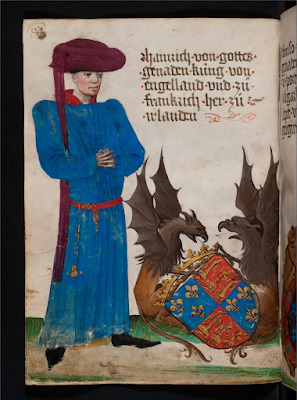
A contemporary portrait of Henry VI, King of England c. 1455.
#Henry VI#King Henry VI of England#Henry VI of England#House of Lancaster#Plantagenet dynasty#Plantagenet#Plantagenets#House of Plantagenet#medieval England
9 notes
·
View notes
Text
“As for her appearance, although a Milanese ambassador described Margaret as 'somewhat dark' for medieval tastes; he also praised her as 'a most handsome woman... wise and charitable' and the Norman chronicler Thomas Basin reported that at the time of the embassy's visit Margaret was 'a good-looking and well-developed girl... mature and ripe for marriage'. Margaret impressed the English envoys sufficiently that from her arrival in Tours on 4 May - it took only three weeks for the marriage with Henry to be agreed and effected.”
—JOHNSON, Lauren. “Shadow King: Life and Death of Henry VI”. P 196
#margaret of anjou#plantagenet dynasty#queen margaret#house of lancaster#henry vi#marguerite d'anjou#queen margaret of anjou#plantagenets#wars of the roses
0 notes
Text
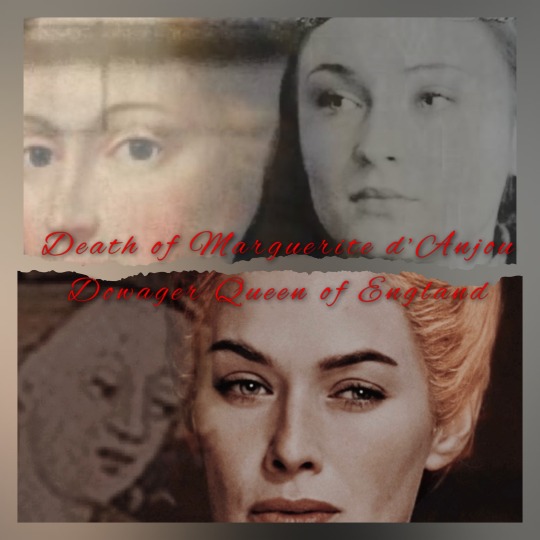
“24 August 1482
From the fairytale turrets of Saumur Castle, atop which golden fleur-de-lys glistened in the summer light, to the bulbous towers of Angers, where the château loomed on a cliff edge above the River Loire, the funeral cortege of Margaret of Anjou carried the queen on her last journey.
For six years she had been exiled back to the lands in which she grew up, a half-welcome guest of her father and King Louis, with little more than hunting dogs, books and a casket of relics to remind her of past glories. She was going now to rejoin her ancestors. Her last request to King Louis was that he would allow her to be buried with her parents: in their sepulchre at Angers Cathedral.
Since her capture at Tewksbury in 1471 Margaret's life had become one of solitary retirement. She had not stayed long in the Tower of London, although she must have been there when Henry was killed.
For a time she was kept at Windsor Castle, and by January 1472 she had moved to Wallingford in Oxfordshire, where her keeper was her old friend, Alice Chaucer, dowager duchess of Suffolk.
The women had once been close, Alice perhaps even having something of a maternal place in Margaret's heart. Since Suffolk's murder their lives had taken very different courses, and their enforced time together during Margaret's imprisonment cannot have been entirely happy.
Where Margaret had resisted the Yorkist regime with all her strength, Alice had come to terms with it even before Henry VI was first deposed. In 1458 Alice had overseen the marriage of her only child, John, to York's daughter Elizabeth. At the time this must have seemed a dangerous move, but her gamble had paid off. Her son still lived, a prominent member of the court of King Edward IV, and a king's brother-in-law.
Margaret, by contrast, had lost her family to the wars. Under house arrest, she was reliant on Edward to provide her with enough money to cover the expenses of herself and her servants.
One of those servants was Lady Katherine Vaux. Katherine had lost her husband, Margaret's old servant Sir William, at Tewksbury and the pair were bound so tightly together, whether through shared grief or the loyalty of many years' service, that Katherine stayed with Margaret until the end.
The pair of them probably appear in an image in the Guild Book of the London Skinners' Fraternity in 1475. Margaret wears an ermine-lined dark gown, her head covered like a nun, kneeling forward to read a religious text from her prayer book while a discarded crown and sceptre lie beside her. Behind Margaret is a more fashionably dressed woman, evidently in attendance on the queen, with her prayer book in her hands, her eyes more on her mistress than her prayers.
Both Katherine and Margaret were members of this fraternity in honour of the Assumption of the Virgin Mary who Margaret, like Henry, always particularly revered. As this image in the Skinners' record suggests, Margaret's imprisonment under Edward IV was not especially stringent.
Other members of the Skinners' Guild Fraternity included Queen Elizabeth Woodville and her ladies, so the fraternity would not have risked their ire by welcoming Margaret without their consent.
Margaret was provided with clothing, mostly black, at royal expense and had enough freedom not only to join this guild but also to enjoy the services of the dean of Edward's chapel in 1474. Having moved from Wallingford to London for most of the intervening years, in 1475 an international treaty between Edward and Louis XI was finalized that ransomed Margaret to Louis for £50,000.
In return for being able to return to her father's territories with a small pension from Louis, Margaret was forced to renounce all of her claims not only in England but also in France. The woman who had clung so tenaciously to her family's right to the English crown was now willing to give up virtually everything she owned to go home. After all, there was no one to inherit her titles or lands after her death. Thus, in November 1475, she was transferred into the keeping of Sir Thomas Montgomery to be escorted to France.
For several years Margaret lived in her father's castle at Reculée, near Angers, but when René died in 1480 she had to rely on one of his servants to provide her literary interests. Some years earlier she had commissioned the Burgundian memoirist Georges Chastellain to write Le Temple de Bocace, a consolation piece dwelling on the changing fortunes of the world and the unjust criticism that had been levelled at her.
Presumably she also occasionally rode or hunted through the verdant rolling fields and woodland surrounding her, enjoying at least one pastime from her old life. Margaret may have ridden from her modest home at Dampierre to the more imposing Château Montsoreau on the banks of the River Loire, over time she developed enough of a relationship with he castle's owner, Madame de Montsoreau, to gift her all of her hunting dogs shortly before her death - a high-status offering for a lady who had perhaps been a friend in the queen's last years.
In the summer heat of 1482 Margaret fell ill and, with the faithful Katherine Vaux at her side, she made her last will and testament on 2 August. Louis XI, who had once mocked her proud writing style, would have found little to displease him in the humble petitions that filled this short document.
'Sound of mind, reason and thought, however weak and feeble of body', Margaret asked to be buried in the cathedral church of St Maurice in Angers beside her parents, 'in whatever manner it pleases the king to ordain, or in another place if he prefers'.
She wrote that she did not have enough money to cover the cost of the funeral and suggested that Louis sold her remaining possessions to pay for her burial - as indeed he did.
And perhaps thinking of Lady Katherine, she 'recommend(ed] very humbly and affectionately' her 'poor servants... to the good grace and charity of the said King'. She had evidently lived on the charity of others for some time, and implored Louis, as her sole heir, to cover any remaining debts she had incurred.
Louis did as Margaret asked and had her honourably buried with her parents, but he insisted on reclaiming the hunting dogs that she had gifted to Madame de Montsoreau. 'You know (Margaret] has made me her heir, the king reminded Montsoreau in a letter written days before the queen actually died, 'and that this is all I shall get; also it is what I love best. I pray you not to keep any back, [or] you would cause me a terribly great displeasure’.
Even in death, Henry and Margaret were the pawns of others.”
JOHNSON, Lauren. “Life and Death of Henry VI”.
Fan cast: Sophie Turner as young Marguerite and Lena Headey as Queen Marguerite.
#margaret of anjou#Marguerite d’Anjou#reine marguerite d'angleterre#queen Marguerite#queen margaret of Anjou#queen margaret#house of lancaster#Plantagenet dynasty#wars of the roses#cousin’s wars#Katherine vaux#Alice chaucer#Edward iv#Elizabeth of York#duchess of Suffolk#Henry VI#king Henry VI#Louis XI of France#Louis XI
19 notes
·
View notes
Text
Favorite royals who were devoted mothers. (1/5)
Blanche de Castille, Queen of France.

#house of capét#Blanca de Castilla#Blanche de Castille#Reina Blanca#Queen Blanche of France#Reine Blanche de France
5 notes
·
View notes
Text
Favorite royals who were devoted mothers.
Marguerite d’Anjou, Queen of England.
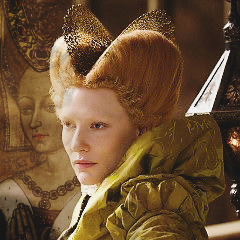
#house of lancaster#house of Anjou#plantagenet dynasty#house Plantagenet#margaret of Anjou#Marguerite d’Anjou#queen margaret#reine marguerite#cate blanchette
1 note
·
View note
Text
Favorite royals who were devoted mothers. (2/5)
Margaret Beaufort, Countess of Richmond.

#margaret Beaufort#house of Beaufort#house of Tudor#house of lancaster#plantagenet dynasty#Henry VII#countess of Richmond#Charlotte Hope
11 notes
·
View notes
Text
Favorite royals who were devoted mothers.(3/5)
Louise of Savoy, Duchess of Bourbon.

#louise of savoy#Louise de Savoie#François I#duchess of Bourbon#Duchesse de Bourbon#Claire Foy#House Valois-Angoulême#House Valois#House of Bourbon
6 notes
·
View notes
Text
Favorite royals who were devoted mothers.(4/5)
Katheryn Parr, Queen of England.

#we work with good stepmothers too#Katheryn Parr#Catherine Parr#Queen Catherine#Queen Katheryn#Tudor dynasty#Tudors#house of Tudor
3 notes
·
View notes
Text
Favorite royals who were devoted mothers (5/5)
Catherine de Médici, Queen of France.
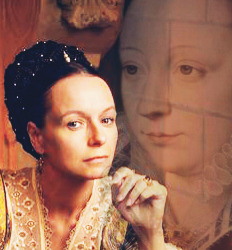
4 notes
·
View notes
